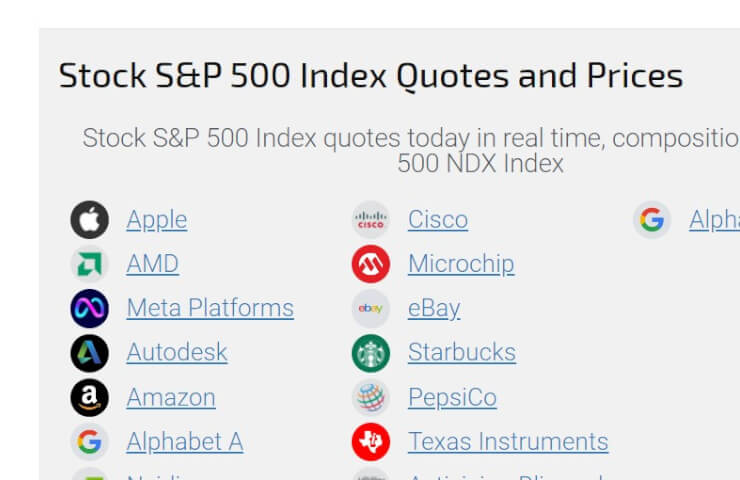The US stock market is the main stock market in the world. Today it consists of several indexes that allow assessing the state of the American economy. From the beginning to the middle of 2022, the US stock market fell significantly, especially in the high-tech IT sector. However, stocks from the S&P 500 index suffered the least, as it includes the 500 largest companies by capitalization in the US in a wide variety of directions: from the energy and financial sector to the largest IT companies. Here you can see stocks from the S&P 500 index - https ://oneinveststock.com/stock-sp-500-index-quotes-and-prices
Today, one of the oldest key indicators is the Dow Jones Industrial Average. It was first calculated back in 1896. However, the most common now is the S&P 500, which was first launched in 1957. In the initial development path, it consisted of 425 industrial companies, including 60 energy and 15 railway shares. It was not until 1970 that financial stocks were gradually included in the index.
What is the S&P 500 Index?
It's not hard to tell from the title that it includes the 500 largest US corporations that are publicly traded. To date, the US market consists of more than 5,000 stocks. Therefore, 500 companies is a drop in the ocean. However, a distinctive feature of the 500 largest US companies is that they form about 80% of the total capitalization in the US stock market. The S&P 500 index can be called one of the most stable in the US stock market for the reason that it includes different companies. In the event of a fall in the US stock market, the S&P 500 index does not decline as much as those indices that focus on one direction or sector.
Key companies are Apple, Nvidia, AMD, Intel, Microsoft, Amazon.com, Berkshire Hathaway, ExxonMobil, Alphabet (Google), JPMorgan Chase, Johnson & Johnson and others. When you buy S&P 500 funds, you can say that you are investing in the entire US economy. Analysts also use it as a key indicator to look at how the US markets and economy are doing.
The annual dividend yield of the S&P 500 companies has outpaced inflation by 3% over the past 60 years, if the growth of quotations is not taken into account. According to the data, the average annual return (after inflation) is 6.4% over the past few decades. Agree that this is quite good?
To be included in the S&P 500, a company must meet several key criteria: a local company (US only), a market capitalization of over $6.5 billion, a publicly traded share of at least 50%, and high liquidity over the past 6 months (minimum the daily turnover is 250,000 papers).
A company's weight in the S&P 500 is distributed based on market capitalization. The more valuable a company is compared to others, the more weight it will receive in the index. Only the capitalization of the company that is freely available (free-float) is taken into account.





